Coronavirus (COVID-19): impact on wellbeing - survey findings
Findings from wave 4 of a telephone survey we commissioned to better understand the impact of the COVID-19 pandemic on people in Scotland
2 Social cohesion and neighbourhoods
Key findings:
Most agree that there are places they can socialise in their neighbourhood – although 3 in 10 disagree.
A third say that, compared to before the pandemic, they have less access to places where they can socialise with others in their neighbourhood.
While most people think their neighbourhood has stayed the same since the pandemic, more say it has got worse than say it has improved.
Most people (84%) agree they could rely on someone in their neighbourhood to help them (very similar to previous waves)
How much do you agree or disagree with the following statements about your neighbourhood?
If I was alone and needed help, I could rely on someone in this neighbourhood to help me
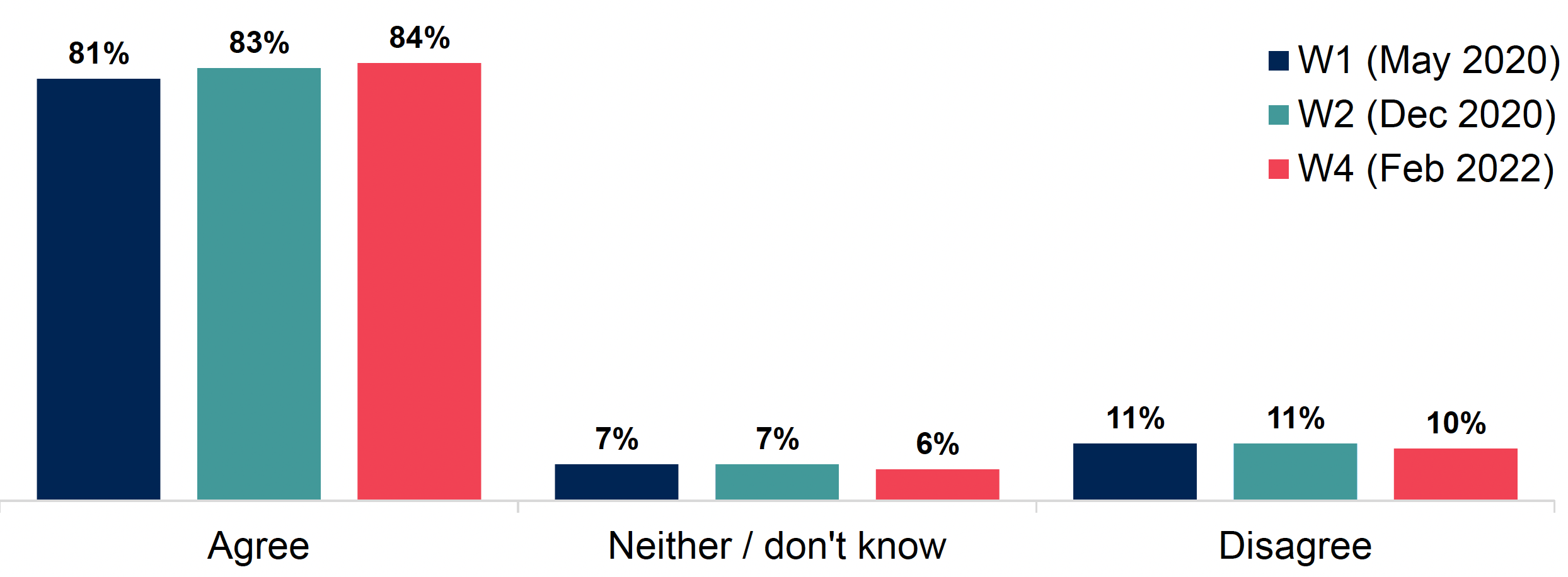
Base: W1 (1,000), W2 (1,004), W4 (1,006), All respondents
Most (64%) agree that there are places people can meet up and socialise in their neighbourhood – but 29% disagree
Q How much do you agree or disagree with the following statements about your neighbourhood?
There are places where people can meet up and socialise.
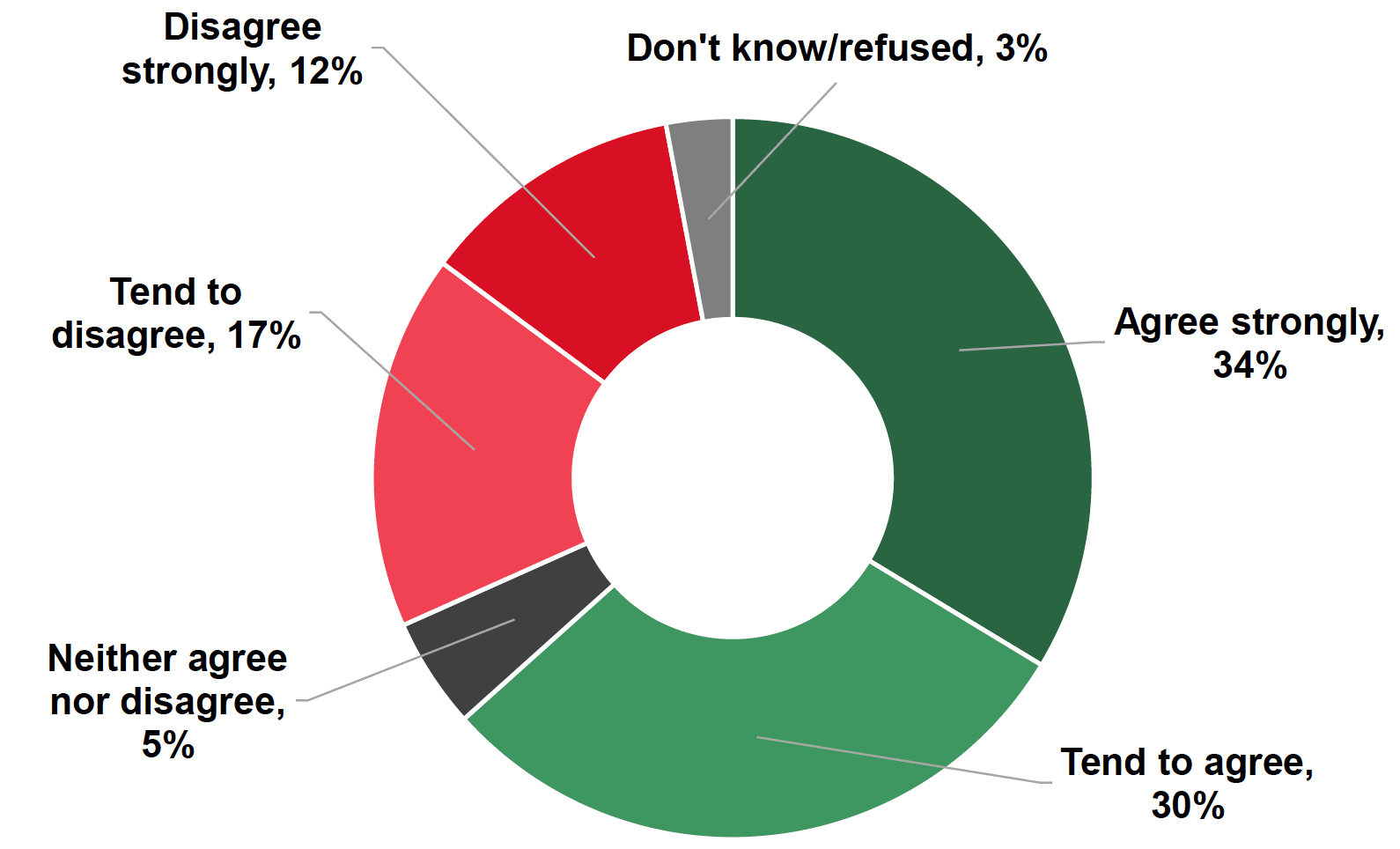
Base: 1,006 respondents age 16+ resident in Scotland; fieldwork = January 26 - February 11 2022
Those in more deprived areas are less likely to agree that there are places in their neighbourhood where people can meet up and socialise (55% of those in the most deprived areas, compared with 72% in the least deprived).
Most (63%) feel their neighbourhood has, in general, stayed the same since the start of the pandemic
However, twice as many think their neighbourhood has got worse (22%) since March 2020 as think it has got better (11%)
Q Thinking about your local neighbourhood, in general do you think it has got better, stayed the same, or got worse since the start of the pandemic in March 2020?
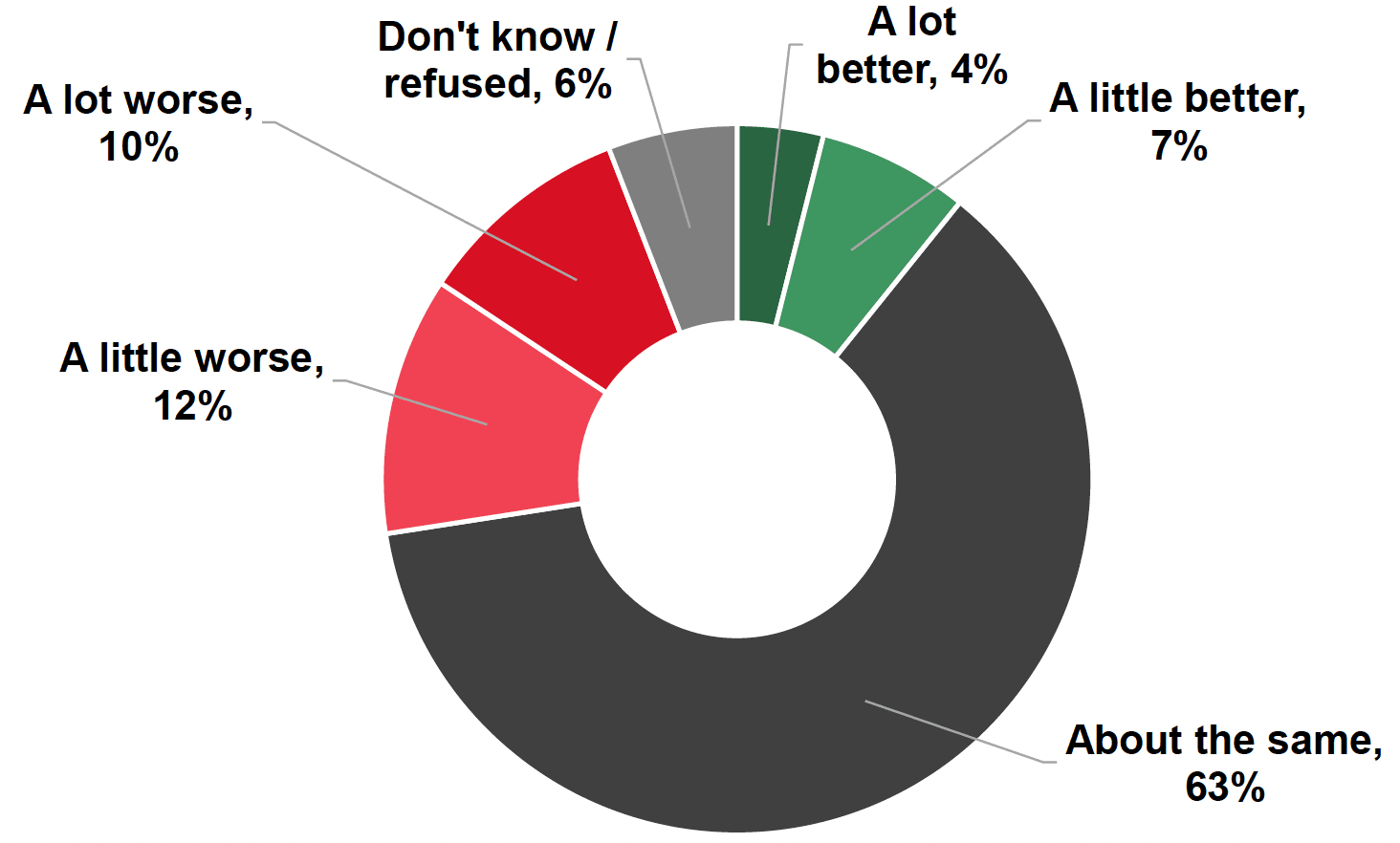
Base: 1,006 respondents age 16+ resident in Scotland; fieldwork = January 26 - February 11 2022
Those in the most deprived areas are more likely to say their neighbourhood has got worse (33%, compared with 12% in the least deprived areas).
Most report having access to various amenities and services within 15-20 minutes of their home
Q As far as you know, which, if any, of the following services or amenities are available within 15-20 minutes of your home?
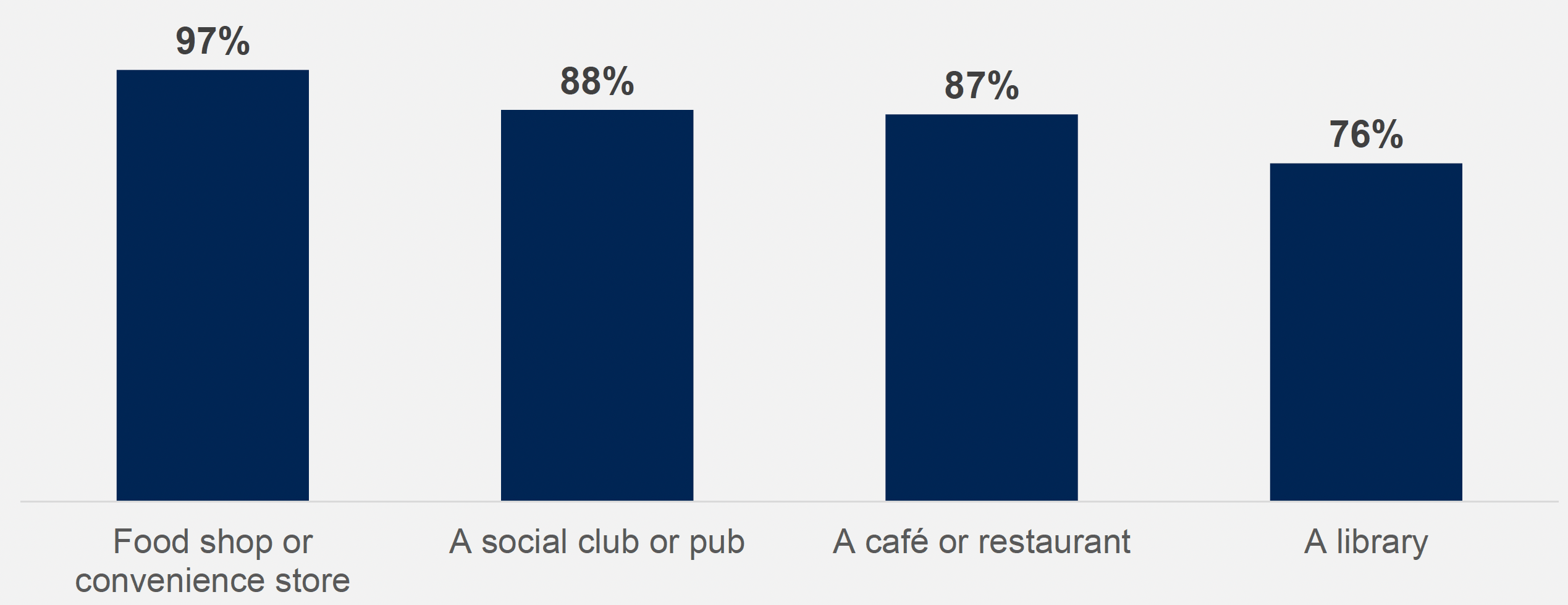
Base: 1,006 respondents age 16+ resident in Scotland; fieldwork = January 26 - February 11 2022
However, compared to before the pandemic, a third (33%) say they have less access to these kinds of places where they might meet up with or bump into other people, and only 2% say they have more access
Q Compared with before the pandemic, how much access to places like this where you might meet others from your area do you feel you have?
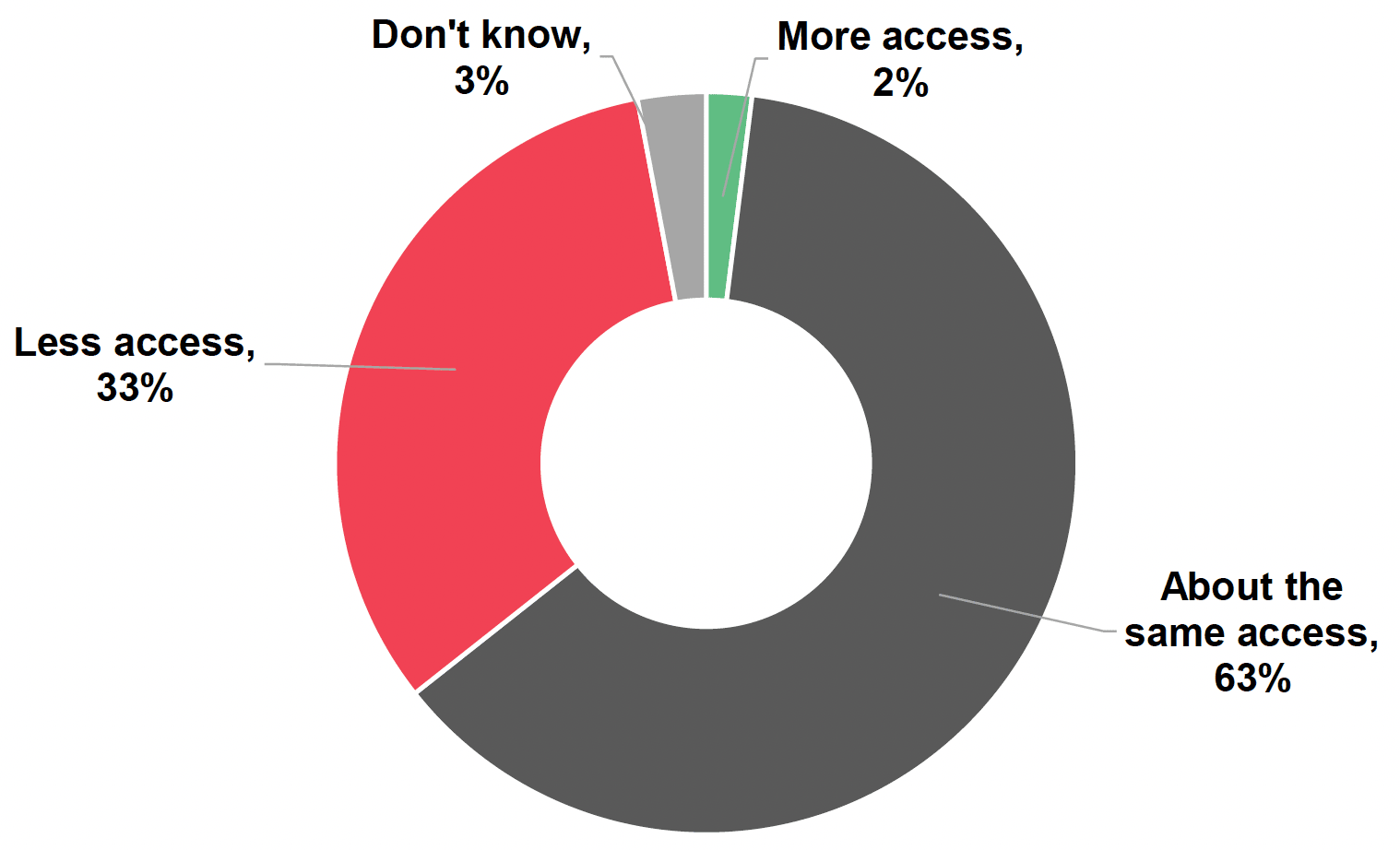
Base: 1,006 respondents age 16+ resident in Scotland; fieldwork = January 26 - February 11 2022
In contrast with other findings, there were no significant differences by area deprivation on this measure.
The vast majority (89%) say they have access to another open space, like a park, beach, wood, canal or river path within a 10-15 minute walk
This was higher compared to Wave 1 (May 2020), when comparatively fewer people reported access to shared gardens or other open spaces (possibly reflecting access restrictions during the initial lockdown)
Q At the moment, do you have access to any of the following within a 10-15 minute walk?
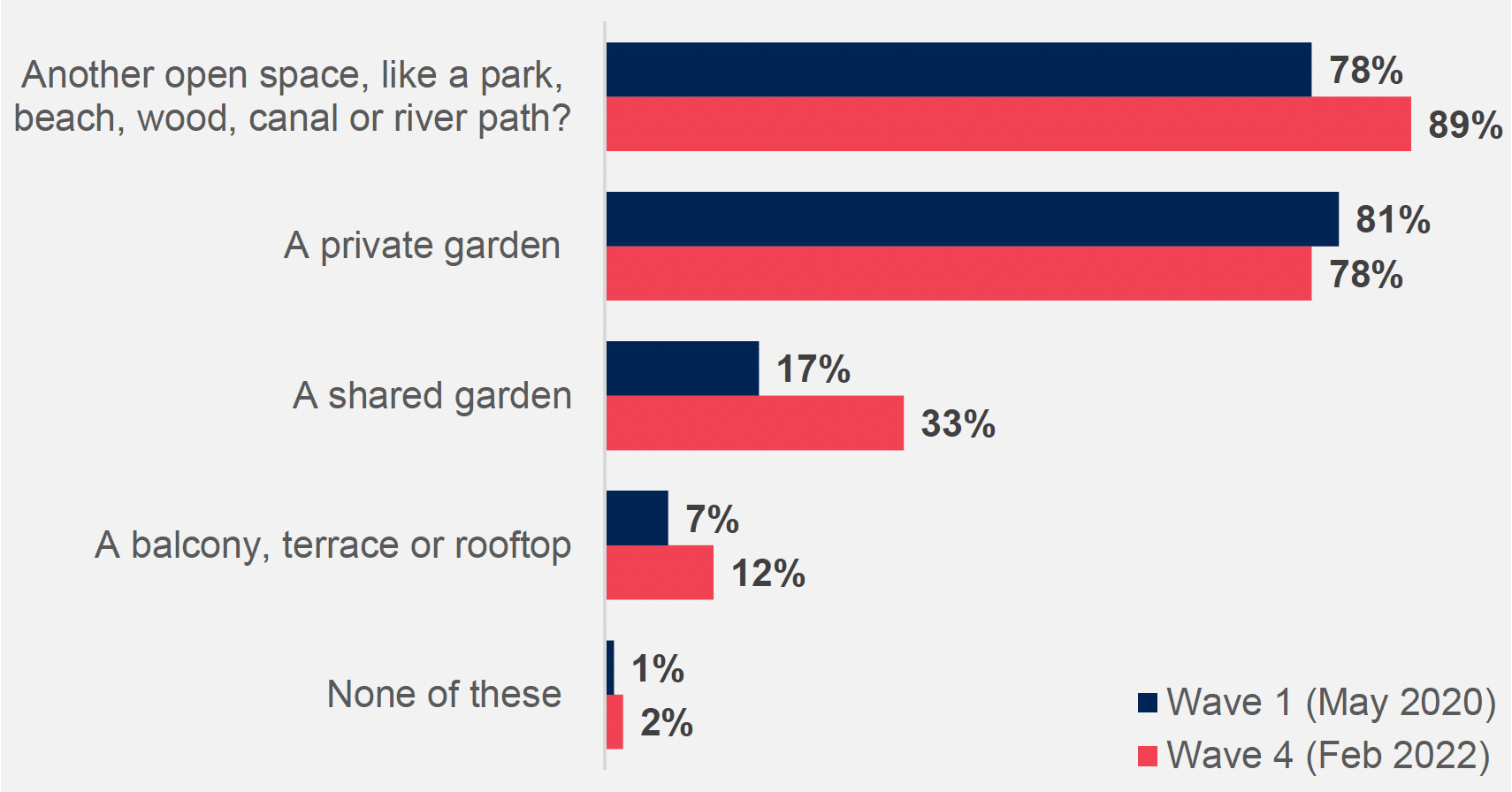
Base: W1 (1,000), W4 (1,006), All respondents
- Those aged 35 and over were more likely to have access to a private garden (85%-86% of age groups over 35, compared with 46% of 16-24 year- olds, and 68% of 25-34 year-olds).
- Those living in rural areas were more likely to have access to a private garden (89% vs. 75%), whereas those living in urban areas were more likely to have access to a shared garden (36% vs 26%).
- Those in the most deprived areas were less likely to have access to a private garden (61%, vs 77%-94% of those in less deprived areas).
Contact
Email: covid-19.behaviours@gov.scot
There is a problem
Thanks for your feedback